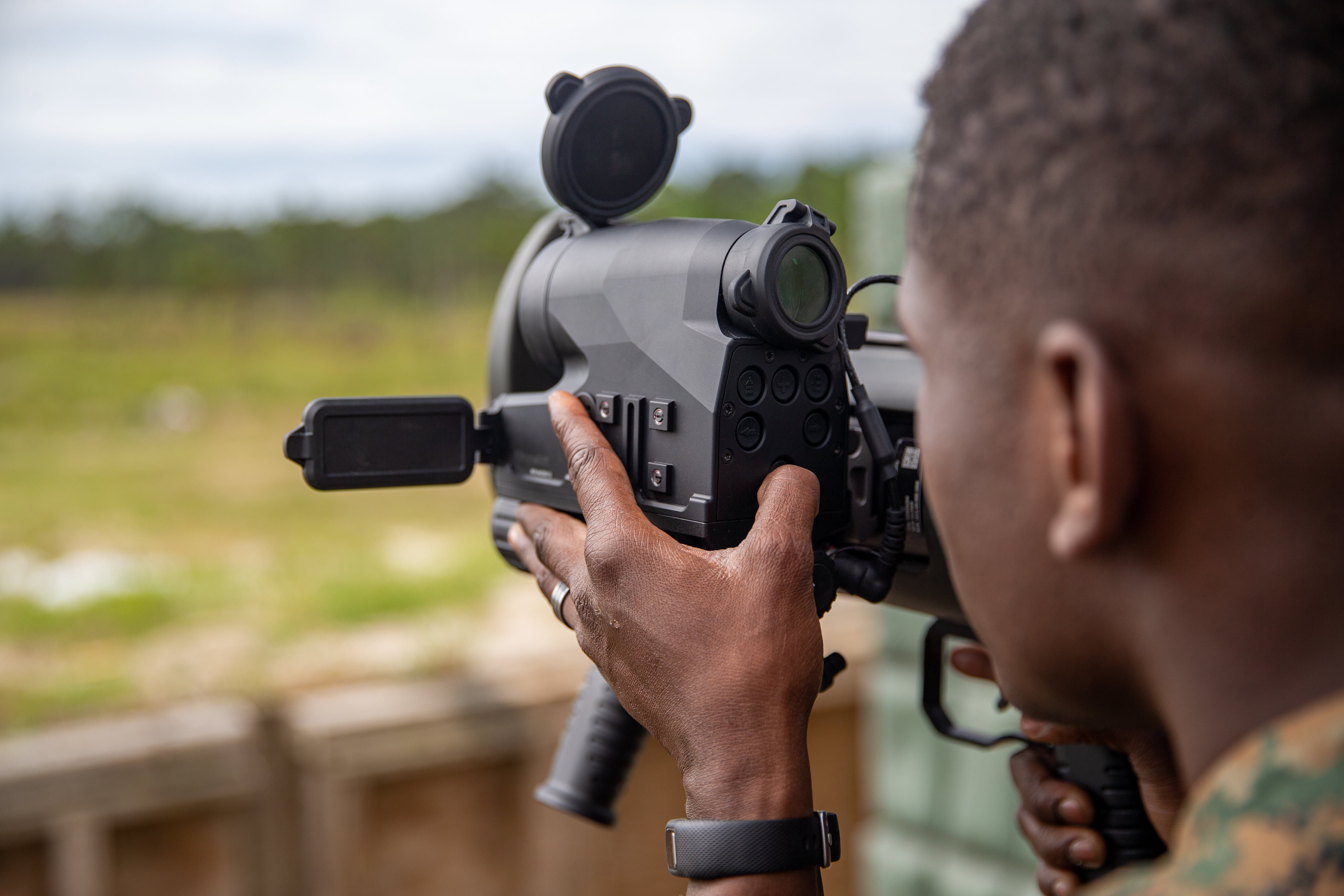East Coast Marines are now blasting away with the Corps’ newest shoulder-fired rocket, the M3A1 Multi-Role Anti-Armor Anti-Personnel Weapons System, or MAAWS.
The reloadable, recoilless rocket system is expected to supplement what’s already in the arsenal and give infantry Marines a way to go after armor, hardened positions and just about anything else small arms can’t take out.
“The MAAWS is a reusable, long-range weapon that provides the capability to destroy armored vehicles, structures and fortifications, which will be useful for infantry Marines,” Capt. Christopher Adsit, Marine Corps Systems Command project officer for the MAAWS, said in a statement.
RELATED

Marine Corps Times earlier reported on the MAAWS transition in 2017 when experiments at the squad level looked to beef up firepower for nearly the smallest element in the ground-pounding force.
The shift at the time foresaw smaller groups of Marines likely facing adversary armor, something that hadn’t been much of an issue in counterterrorism or counterinsurgency operations over the previous two decades.
“When we do urban operations, we carry a rocket because you don’t know what kind of enemy we’ll have, what capabilities they’ll have,” said Sgt. David Beggel, squad leader with 1st Battalion, 2nd Marine Regiment. “This gives us a wide range of opportunities and assets that we can use to destroy a vehicle or take out [the enemy].”
Fleet Marines will receive the MAAWS by the end of 2023 and reserve Marines by 2024. He projects every Marine Corps battalion to have the weapon in their arsenal by 2025, officials said.
At the time, the Army already had kicked off a contract to buy more than 1,100 MAAWs. But the service had planned at the time to keep the weapon at the platoon level.
The Marines want at least one in every infantry squad.
While the rocket is new for Marines, its baseline version, the Carl Gustaf 84 mm recoilless rifle, has been in use in some form since 1946.
The newer M3A1 variant, however, comes in one third lighter and 3 inches shorter than its predecessor.
The weapon can overpower the rocket-propelled grenade systems that adversaries often use and gives Marines the ability to carry and fire more rounds than the single-use AT-4.

It’s also more accurate than the AT-4, with precision-guided munitions and a variety of ammo options for a host of tasks.
The new Gustaf laser-guided projectile features a multi-target warhead capable of defeating bunkers, concrete, light-skinned vehicles and armored personnel carriers, and has a range of nearly 2,000 meters, according to officials with Raytheon and Saab, the weapon’s designers.
Also, safety for the user has been considered and now offer another space to fire the weapon from, especially in urban settings.
The new precision round can be fired from inside a room. This means a Marine can fire from the safety of a room, window, or behind cover without the fear of backblast causing injury or harm.
Gaseous over-pressurization that erupts from firing anti-tank rockets results in backblast, so Marines firing these systems must be aware of who or what is behind them before they fire.
The system consists of the M3A1 Carl Gustaf Recoilless Rifle, a fire-control system and a backup reflex sight Marines can use if the primary optic malfunctions, according to the MCSM statement.
The fielded system includes munitions that provide obscuration, illumination, anti-personnel, armor penetration, bunker- and hardened-facility penetration, and other destruction capabilities.
“It has the ability to fire [illumination], smoke and airburst-style rounds,” said Chief Warrant Officer 4 David Tomlinson, System Command’s infantry weapons officer. “The capability will allow the warfighter to engage the enemy in defilade, reinforced bunkers and buildings.”
The MAAWS augments but doesn’t yet completely replace the current Mk153 Shoulder-Launched Multipurpose Assault Weapon or the M72 Light Anti-Tank Weapon, or LAW.
Marines have carried the SMAW since 1984, though it did get some upgrades in the early 2000s, according to the statement.
MAAWS has greater range than both the SMAW and LAW.
In early 2021, nearly 100 Marines at both Schools of Infantry East and West test fired the weapon.
All three rockets, MAAWS, SMAW and LAW will remain options for now.
Todd South has written about crime, courts, government and the military for multiple publications since 2004 and was named a 2014 Pulitzer finalist for a co-written project on witness intimidation. Todd is a Marine veteran of the Iraq War.



